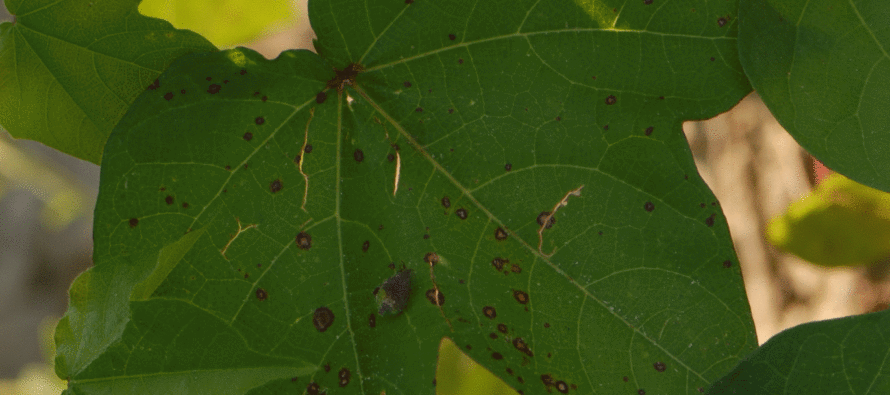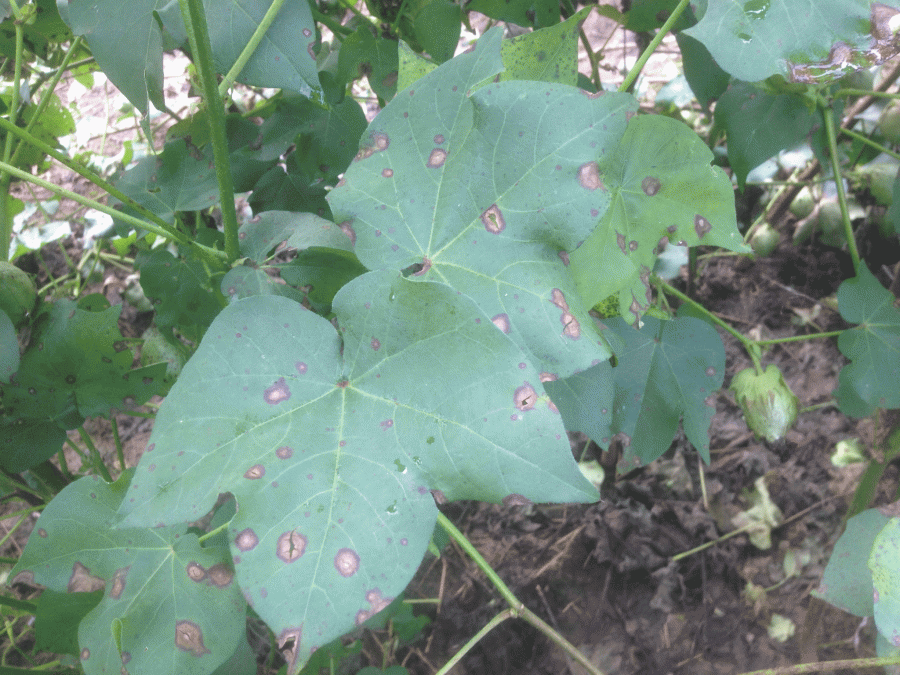Cotton Foliar Diseases (updated/corrected)

Related Articles
- Rice Variety Trial Results For 2010, Plus Rice Research Report 0
- Evaluation of Peanut Prescription Rx Program in Mississippi 0
- Fertilizing Cotton with Poultry Litter 5
Latest Tweets
Unsightly spots on cotton leaves are becoming more common as the year progresses. There are a number of things that can cause cotton leaf spotting including herbicide injury, disease, insect feeding (i.e. spider mites), or numerous other factors. The focus of this post will be on spots caused by disease causing organisms. Commonly, during August foliar diseases make an appearance. In many cases the complex of foliar disease causing organisms (Alternaria, Cercospora, Stemphyllium, etc.) that cause these diseases are typically linked to potassium deficiency in cotton leaves, but are not generally related to a soil deficiency. However, it is not difficult to sample cotton leaves and have a nutrient deficiency appear depending on a number of factors. Several factors can contribute to nutrient deficiencies:
Shallow roots – shallow roots can limit water and nutrient uptake which can result in nutrient deficiencies.
Dry weather – lack of water for the plant to utilize nutrients can lead to nutrient deficiencies in leaf tissue.
Low levels of nutrients in the soil – your soil samples should reveal if this is the case.
Supply and demand – cotton at peak bloom typically uses 3-4 pounds of potassium per day – it can be difficult for the plant to acquire needed levels on soil nutrients, particularly when combined with a heavy fruit load and/or one of the aforementioned situations.
The leaves you sample can have a tremendous impact on nutrient readings returned from a laboratory analysis. Typically, the fifth leaf below the terminal is the youngest fully expanded leaf. Sampling any leaves above this point will likely return results indicating a nutrient deficiency. In numerous fields in the Delta this past week, the first to fourth leaves below the terminal exhibited symptoms of potassium deficiency. However, upon examining the fifth leaf down – all appeared normal.
In nearly all cases where a complex of foliar disease is present, yield is not impacted. While it may appear unsightly and some level of defoliation may occur, keep in mind the value of leaves in the lower canopy (likely the ones that would shed) at this point in the growing season. Lower leaves are adding a reduced value to the overall plant’s growth on a daily basis – in some cases open bolls are already present on some of these nodes and others are not far behind. A fungicide is not suggested to help prevent further onset of these foliar diseases; especially those as related to foliar nutritional deficiency. Data supporting yield increases from fungicide applications on the complex of foliar diseases is lacking especially as a timed application.
Proper identification is important. Given that we have a complex of foliar diseases present in fields as well as target spot and bacterial blight, it is important to understand the disease present. For example, if you have confirmed bacterial blight, you may consider planting a resistant variety in 2018. If you have target spot and plan to have cotton in the field again next year, consider a management plan that will provide adequate, but not excessive canopy growth. In the case of target spot and bacterial blight, potassium is typically not related to onset or severity of these diseases. In our opinion, unbiased sources of data regarding the management of target spot with a fungicide is inconclusive. In addition, a fungicide will not provide control of bacterial blight. Please see images below for examples of foliar disease, target spot, and bacterial blight in cotton.
 Foliar disease (alternaria, cercospora, stemphyllium, etc.)
Foliar disease (alternaria, cercospora, stemphyllium, etc.)
 Target spot
Target spot
 Bacterial blight
Bacterial blight




Let me tell You a sad story ! There are no comments yet, but You can be first one to comment this article.
Write a comment